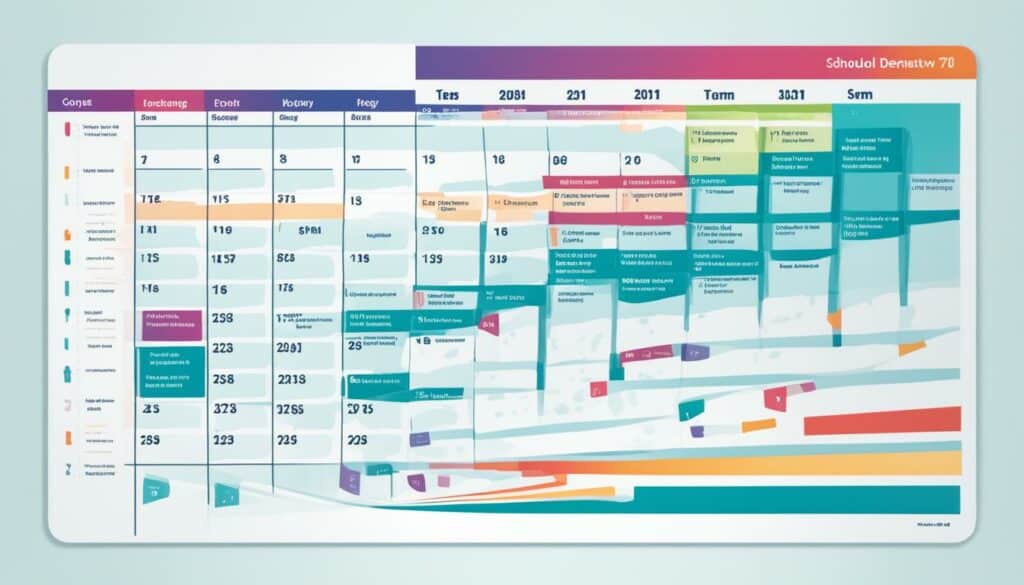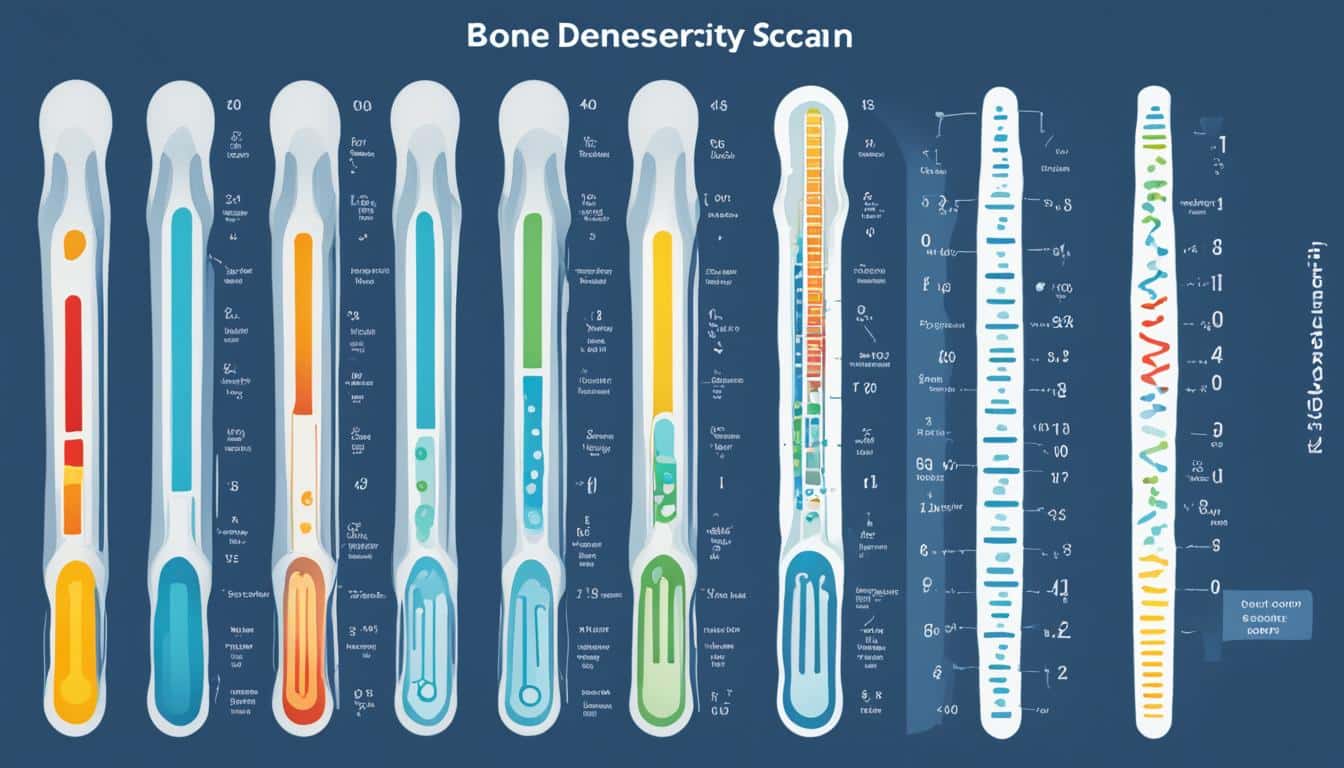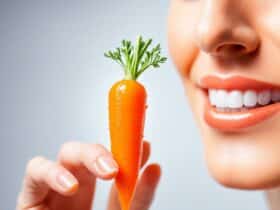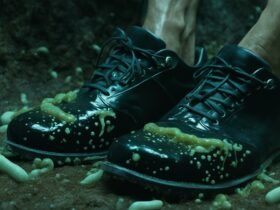Welcome to our comprehensive guide on bone density scan frequency. Regular bone density scans are crucial for monitoring your bone health and detecting potential issues early. In this article, we will provide guidelines and recommendations on how often you should schedule these scans to ensure optimal bone health.
Key Takeaways:
- Regular bone density scans are essential for maintaining good bone health.
- The timing of bone density scans plays a significant role in detecting potential issues early.
- The recommended schedule for bone density testing may vary based on age, sex, and other risk factors.
- Factors such as age, medical history, and lifestyle choices can influence the frequency of bone density scans.
- Understanding the basics of bone mineral density testing is crucial in determining the optimal testing intervals.
Importance of Bone Density Scans
Understanding the importance of bone density scans is crucial for maintaining good bone health. Regular bone density scans are necessary as they play a significant role in detecting potential issues early. By monitoring your bone density, you can take proactive steps to prevent fractures, osteoporosis, and other bone-related conditions.
The Role of Timing
Timing plays a crucial role in bone density screenings. The frequency at which you undergo these scans will depend on various factors such as age, sex, medical history, and lifestyle choices. It is important to consult with your healthcare provider to determine the frequency that is most suitable for you.
“Early detection is key in managing bone health. By identifying bone loss early on through regular bone density scans, healthcare professionals can recommend appropriate interventions to prevent further complications.”
For individuals at higher risk of developing osteoporosis or experiencing bone fractures, bone density scans may be recommended more frequently. This may include individuals with a family history of osteoporosis, a previous fracture, or those using medications known to impact bone health.
On the other hand, for individuals with no known risk factors and normal bone density, bone density scans may be recommended less frequently. It is important to note that these recommendations may vary depending on individual circumstances, and regular communication with your healthcare provider is essential.
Regular bone density scans can offer peace of mind by providing valuable information about your bone health. These scans help in identifying any potential issues before they become more severe, enabling early intervention and prevention. By prioritizing bone density screenings and adhering to the recommended frequency, you can take proactive steps towards maintaining optimal bone health.
Recommended Schedule for Bone Density Testing
Regular bone density testing is crucial for maintaining optimal bone health and identifying potential issues at an early stage. The recommended schedule for bone density testing depends on various factors, including age, sex, and individual risk factors. By following these general guidelines, you can stay proactive in managing your bone health:
- Age: For women over 65 and men over 70, bone density testing is generally recommended every two years. This frequency helps monitor changes in bone density as we age and allows for timely intervention if needed.
- Postmenopausal Women: Women who have gone through menopause and have additional risk factors, such as a family history of osteoporosis or a history of fractures, may benefit from more frequent bone density scans. It is advisable to consult with a healthcare professional to determine the most appropriate testing interval.
- Men: While osteoporosis is often associated with women, men can also develop this condition. Men with risk factors, such as low testosterone levels or a history of fractures, may need bone density testing at regular intervals. Again, consulting with a healthcare professional is essential for personalized recommendations.
- Medical Conditions and Medications: Certain medical conditions, such as hyperparathyroidism or chronic kidney disease, can increase the risk of osteoporosis. Additionally, long-term use of medications like corticosteroids can impact bone health. Individuals with these conditions or taking these medications may require more frequent bone density scans.
Understanding the Results
Once you undergo a bone density scan, it’s important to understand the results and how they contribute to your overall bone health assessment. The results of a bone density scan are typically presented in two ways:
- T-Score: The T-score compares your bone density to that of a healthy young adult of the same sex. A T-score of -1.0 or above is considered normal, while a score between -1.0 and -2.5 indicates low bone density (osteopenia). A T-score of -2.5 or lower is indicative of osteoporosis.
- Z-Score: The Z-score compares your bone density to that of individuals of the same age, sex, and body size as you. This score helps identify factors other than age and sex that might be affecting your bone health.
It is essential to discuss the results of your bone density scan with your healthcare provider. They can help interpret the findings, assess your risk, and recommend appropriate preventive measures or treatments if necessary.
“Regular bone density testing is the key to preventing and managing osteoporosis. By understanding the recommended schedule and the significance of the results, you can take proactive steps to protect your bone health.” – Dr. Samantha Richards, Bone Health Specialist
| Age Group | Recommended Testing Interval |
|---|---|
| Women over 65 | Every 2 years |
| Men over 70 | Every 2 years |
| Postmenopausal women with additional risk factors | Every 1-2 years |
| Men with risk factors | Every 1-2 years |
| Individuals with medical conditions or taking medications that increase the risk of osteoporosis | As recommended by healthcare provider |
By adhering to the recommended schedule for bone density testing, you can stay proactive in managing your bone health and reduce the risk of complications associated with osteoporosis.

Factors Influencing Scan Frequency
When it comes to determining the ideal frequency for bone density scans, several factors are taken into consideration. These factors help healthcare professionals create guidelines that suit each individual’s unique needs. By understanding these influential factors, individuals can make informed decisions about their bone density scan frequency.
Influence of Age
Age plays a crucial role in determining how often bone density scans should be performed. As we age, our bone density naturally starts to decline, making regular monitoring essential to detect any signs of osteoporosis or other bone-related conditions. While there is no universal age at which individuals should start getting regular scans, healthcare professionals generally recommend bone density scans for women starting at the age of 65 and for men at 70.
Medical History
A person’s medical history can significantly influence the frequency of bone density scans. Individuals with certain medical conditions or risk factors, such as a family history of osteoporosis, long-term steroid use, or a history of fractures, may require more frequent scans. Additionally, individuals who have previously been diagnosed with osteoporosis or have experienced a significant decline in bone density may need more regular monitoring.
Lifestyle Choices
Lifestyle choices, such as diet, exercise, and alcohol and tobacco consumption, can impact bone health and, by extension, the frequency of bone density scans. A diet lacking in calcium and vitamin D, sedentary behavior, excessive alcohol consumption, and smoking can all contribute to bone loss and weaken bone density. Therefore, individuals with such lifestyle habits may be recommended more frequent scans to closely monitor their bone health.
Pro Tip: Maintaining a healthy lifestyle, which includes a balanced diet, regular exercise, and avoiding harmful habits like smoking and excessive drinking, can help preserve bone health and potentially reduce the need for more frequent scans.
Other Risk Factors
In addition to age, medical history, and lifestyle choices, there may be other risk factors that healthcare professionals consider when determining the ideal scan frequency. These factors can include hormonal imbalances, certain medications, low body weight, and previous fractures caused by minimal trauma. By understanding these risk factors and discussing them with a healthcare provider, individuals can gain clearer insights into their bone health and the recommended scan frequency.
Understanding the various factors that influence the frequency of bone density scans is crucial for individuals seeking to maintain optimal bone health. By considering age, medical history, lifestyle choices, and other risk factors, healthcare professionals can provide personalized recommendations for the frequency of bone density scans, ensuring timely detection of any bone-related issues.
Understanding Bone Mineral Density Testing
When it comes to determining the optimal frequency of bone density scans, it is crucial to have a clear understanding of the process of bone mineral density testing. This diagnostic procedure plays a significant role in assessing bone health and identifying potential issues early on.
Bone mineral density testing, also known as a bone density scan, measures the strength and density of your bones. It helps identify conditions such as osteoporosis and osteopenia, which involve a loss of bone density and an increased risk of fractures.
During a bone density scan, a specialized machine called a dual-energy x-ray absorptiometry (DXA) scanner is used to measure the amount of calcium and other minerals in specific bones, typically the hip and spine. The scan is quick, painless, and non-invasive.
By analyzing the results of the bone density scan, healthcare professionals can determine your bone mineral density (BMD) and compare it to the average value for your age and sex. This comparison provides valuable insights into the health of your bones, helping to identify any potential weaknesses or areas of concern.
“Bone mineral density testing is a valuable tool in detecting and managing bone health issues. By assessing your bone density, medical professionals can design personalized treatment plans to help prevent fractures and maintain bone strength.”
The frequency of bone density exams depends on various factors, including your age, medical history, and risk factors for bone-related conditions. Guidelines provided by professional organizations, such as the International Society for Clinical Densitometry and the United States Preventive Services Task Force, can help determine the recommended timing for these screenings.
Factors Affecting Bone Density Scan Frequency
Several factors influence the frequency of bone density exams. These factors include:
- Age: As you get older, the risk of bone loss increases, making regular bone density scans more important.
- Medical history: If you have a history of fractures or a condition that affects bone health, your healthcare provider may recommend more frequent screenings.
- Medications: Certain medications, such as long-term corticosteroid use, can increase the risk of bone loss and may warrant more frequent monitoring.
- Lifestyle choices: Factors like smoking, excessive alcohol consumption, and a sedentary lifestyle can contribute to bone loss and may require more frequent scans.
It is important to consult with your healthcare provider to determine the optimal frequency for bone density scans based on your individual circumstances. They will consider your risk factors, medical history, and any other relevant factors to develop a personalized screening schedule for you.
Regular bone density testing is crucial for monitoring bone health and detecting any underlying issues. By understanding the process of bone mineral density testing and considering the factors that influence scan frequency, you can take proactive steps to maintain strong and healthy bones.

Guidelines for Optimal Testing Intervals
When it comes to scheduling bone density scans, there are specific guidelines that can help determine the best timing for these screenings. Medical professionals and organizations recommend considering various factors, such as age, sex, medical history, and other relevant considerations.
One common guideline for bone density scan frequency is to start testing at age 65 for women, as they are at a higher risk for osteoporosis. However, individual factors may influence the need for earlier screening. For instance, women who have experienced early menopause or have a family history of osteoporosis may be advised to undergo bone density testing sooner.
Men are also susceptible to bone density loss, especially as they age. Therefore, it may be recommended for men to undergo their first bone density scan at age 70 or sooner, depending on individual risk factors.
It’s important to note that these are general guidelines and that individual circumstances may warrant more frequent or earlier testing.
In cases where an individual has been diagnosed with osteoporosis or has a history of fractures, more frequent testing may be necessary to monitor bone health and properly assess the effectiveness of treatment.
Regular bone density scans are also recommended for individuals on certain medications that may increase the risk of bone loss, such as long-term corticosteroid use or certain cancer treatments.
“The timing and frequency of bone density testing can significantly impact the early detection and management of osteoporosis. By following medical guidelines and considering individual risk factors, patients can ensure timely and appropriate bone density screenings.”
It’s important to work closely with your healthcare provider to determine the best bone density scan frequency for your specific needs. They will take into account your medical history, risk factors, and lifestyle choices to create a personalized screening plan.
Recommended Testing Intervals for Different Groups:
| Age Group | Recommended Testing Interval |
|---|---|
| Women 65 and older | Every 2 years |
| Men 70 and older | Every 2 years |
| Postmenopausal women with risk factors | Every 1-2 years |
| Individuals on high-risk medications | Every 2 years or as recommended by healthcare provider |
These recommended testing intervals serve as a general guideline, but individual factors may influence your specific screening plan. By working closely with your healthcare provider, you can determine the optimal frequency for bone density screenings to protect and manage your bone health.
Factors to Consider When Deciding on Scan Frequency
When it comes to determining the frequency of bone density scans, it’s important to take various factors into consideration. The right scan interval can ensure timely detection of potential bone health issues and enable proactive management. Here are some key factors to keep in mind:
1. Age and Hormonal Changes
Age plays a significant role in bone health. As you get older, the risk of developing osteoporosis and experiencing bone loss increases. Women also go through hormonal changes during menopause that can affect bone density. If you are above 65 years of age or have reached menopause, it’s advisable to have regular bone density scans to monitor your bone health.
2. Medical History and Risk Factors
Your medical history and personal risk factors can influence the frequency of bone density scans. If you have a family history of osteoporosis, a previous history of fractures, or underlying medical conditions that affect bone health, such as rheumatoid arthritis or hyperthyroidism, you may need more frequent scans. Consult with your healthcare provider to assess your individual risk and determine the appropriate scan frequency.
3. Medications and Lifestyle Choices
Certain medications and lifestyle choices can impact bone health. Prolonged use of corticosteroids, such as prednisone, can increase the risk of bone loss. Additionally, smoking, excessive alcohol consumption, and a sedentary lifestyle can also contribute to bone density issues. If you are taking medications or have lifestyle habits that may affect bone health, discuss the frequency of bone density scans with your healthcare professional.
4. Previous Bone Density Results
If you have previously undergone bone density scans and the results indicated normal bone density, your healthcare provider might recommend longer intervals between scans. However, if the results showed low bone density or osteoporosis, more frequent scans may be necessary to monitor changes and assess the effectiveness of treatment.
Keep in mind that these are general guidelines, and individual circumstances may vary. It’s essential to consult with your healthcare provider to determine the most suitable scan frequency for your specific needs. Regular bone density scans, combined with a healthy lifestyle and appropriate management strategies, can help safeguard your bone health and reduce the risk of fractures and complications.
Conclusion
In conclusion, regular bone density scans are vital for monitoring bone health and detecting potential issues early. These scans provide valuable information about the density and strength of your bones, allowing healthcare providers to assess your risk of developing osteoporosis and fractures.
By following the recommended scheduling guidelines, you can ensure that you receive timely and appropriate bone density testing. However, it’s important to remember that individual factors should also be taken into consideration. Factors such as age, sex, medical history, and lifestyle choices can influence the frequency of your bone density scans.
To determine the best frequency for your specific needs, it is crucial to consult with your healthcare provider. They can assess your individual risk factors, consider your medical history, and provide personalized recommendations for bone density testing intervals.
FAQ
How often should I get a bone density scan?
The frequency of bone density scans can vary based on individual factors such as age, medical history, and risk factors. In general, it is recommended to get a bone density scan every 2 to 3 years for most adults. However, it is best to consult with your healthcare provider to determine the optimal interval for your specific situation.
Why are bone density scans important?
Bone density scans are crucial for assessing bone health and detecting conditions such as osteoporosis or low bone density. These scans help identify potential issues early, allowing for appropriate interventions and treatments to prevent fractures and maintain bone strength.
What is the recommended schedule for bone density testing?
The recommended schedule for bone density testing may vary depending on your age, sex, and risk factors. As a general guideline, women aged 65 and older should have a bone density scan every 2 years. Men aged 70 and older, as well as younger individuals with specific risk factors, may also require regular scans. It is important to consult with your healthcare provider to determine the most appropriate schedule for you.
What factors influence the frequency of bone density scans?
Several factors can impact the frequency of bone density scans. Age, medical history, family history of osteoporosis, hormone levels, and lifestyle choices such as smoking or excessive alcohol consumption may all influence how often you should get a bone density scan. Your healthcare provider will consider these factors to determine the optimal frequency for you.
How does bone mineral density testing work?
Bone mineral density testing measures the strength and density of your bones. It involves a painless and non-invasive procedure called dual-energy X-ray absorptiometry (DXA or DEXA) scan. This scan measures the amount of mineral content in your bones, typically focusing on the hip and spine. The results help assess your risk of fractures and determine if any interventions are necessary.
What are the guidelines for optimal bone density testing intervals?
Guidelines for optimal bone density testing intervals may vary depending on factors such as age and medical history. Generally, for individuals without significant risk factors, it is recommended to have a bone density scan every 2 to 3 years. However, if you have certain risk factors, such as a family history of osteoporosis or a previous fracture, more frequent scans may be necessary. Consult with your healthcare provider for personalized recommendations.
What factors should I consider when deciding on the frequency of bone density scans?
When deciding on the frequency of bone density scans, it is important to consider factors such as age, medical history, risk factors for osteoporosis, and lifestyle choices. Additionally, discuss with your healthcare provider any potential medications or existing conditions that may affect bone health. Taking these factors into account will help determine how often you should undergo bone density scans.











